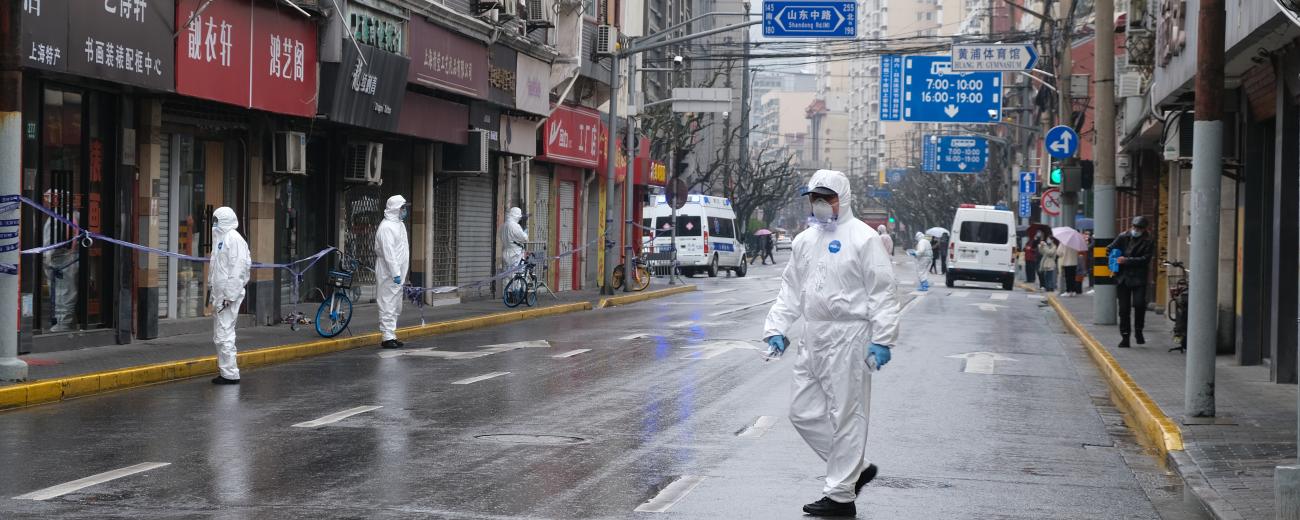Has the Chinese government lost their control of protests?


Political dissidence in China is extremely rare. A 2013 study on Sina Weibo* found that 30% of messages that are ‘unacceptable’ are detected within 5-30 minutes of posting, and 90% are deleted within 24 hours. However, since the 24 November, Weibo has been inundated with people expressing their discontent and frustration with the government, specifically, “snap lockdowns” across China.
Many people in China were hoping that the Party Conference would be an announcement of the end of China’s rigorous pursuit of the zero-COVID policy, or at least some rest bite from the economic hardship zero-COVID has brought to many. However, the Party Congress announced the doubling down of zero-covid. This angered many people since most aren’t compensated for time off work for lockdown leave. Soon after the announcement, a video went viral that proved, to many, how dangerous the government’s commitment to this policy was. The video captured a mother being held by her daughter after she’d fallen from her apartment window. Her daughter was filmed banging on the compound’s gates begging and pleading with the lockdown guards, to no avail, to let her take her mother to hospital. The video gained half a billion views on Weibo before being removed by sensors. The video encapsulated the anger, fear and desperation that many felt when trapped in their buildings, quite literally, barricaded off from the outside world.
Earlier, in October, there were protests at an iPhone factory because many workers refused to enter another lockdown and wanted to return home. Foxcom, the company that owns the iPhone factory, hired new employees to fill the vacancies. Foxcom, however, had been failing to test their current employees regularly and when new employees arrived they were forced to go into lockdown after catching COVID from their co-workers. On top of this, Foxcom had promised new employees bonuses for filling the vacancies on short notice which they had not followed through on. Frustrated with the rampant mismanagement at the factory, workers protested and were met with heavy police opposition.
On the 24 November, a fire broke out in an apartment building in Urumqi, Xinjiang. Ten people died in the fire and a further nine were severely injured. Weibo erupted with videos of the fire because that building was under lockdown restrictions which, in China, means the building was barricaded with a guard in full hazmat protection after at least one covid case. People online said that lockdown restrictions prevented proper help from accessing the building, and those trapped inside from escaping. The government has since said that restrictions weren’t limiting emergency services. However, videos taken from neighbouring buildings, which have since been censored in China, show a fire engine stopping one building over, where the lockdown barricades are, and the water from it clearly not reaching the fire.
The recent lockdowns have been due to a sudden increase in COVID cases. In late November, cases reached 31,000. This is relatively few compared to the UK, however, fewer people in China are vaccinated. 87% of the population have received two vaccines, but very few people have been vaccinated further than that. Most of the population is vaccinated with the Sinovac COVID vaccine which consistently underperforms when pitted against the Pfizer or Johnson&Johnson vaccines. These are a few of the reasons why the government has been more cautious than some other countries about reopening up. However, following three years of exasperating lockdowns, recent events were proving to many that the government cared more about not backing down on their policy than they did about the wellbeing of the population. The accumulation of these saw the fire in Urumqi become the catalyst for violent clashes between protesters and police in late November across several Chinese cities.
At Peking University, some students were put into quarantine after having allegedly 300 “close contacts” two days after protests against the government on campus. Small makeshift quarantine facilities had been put up in all universities in Beijing. Many believe that this crackdown on universities is because, historically in China, that’s where large-scale anti-government movements begin, like the 1919 May 4th movement. Similarly, following the death of former President, Jiang Zemin, the government hasn’t allowed the public to visit his state funeral, in order to prevent a mass gathering that could potentially turn into an anti-government movement.
Despite efforts from the government to crack down on protests, they finally conceded and announced on 7 December that the most intensive elements of their zero-COVID policy would be abandoned. This means that testing and travel restrictions have now been relaxed, and that anyone with mild or no symptoms will be allowed to isolate at home for the first time. However, researchers have warned that these changes could lead to a rise in infections, with the risk of overwhelming hospitals.
*Sina Weibo: Sina Weibo is a micro-blogging website in China. Weibo means micro-blog. There are many but Sina Weibo is the most popular
About the author
Lizzy Elrick is a SOAS Digital Ambassador doing first-year undergraduate Politics and Chinese. Lizzy has an interest in British and East Asian politics. Outside of studies, they enjoy rugby and could talk forever about music.


